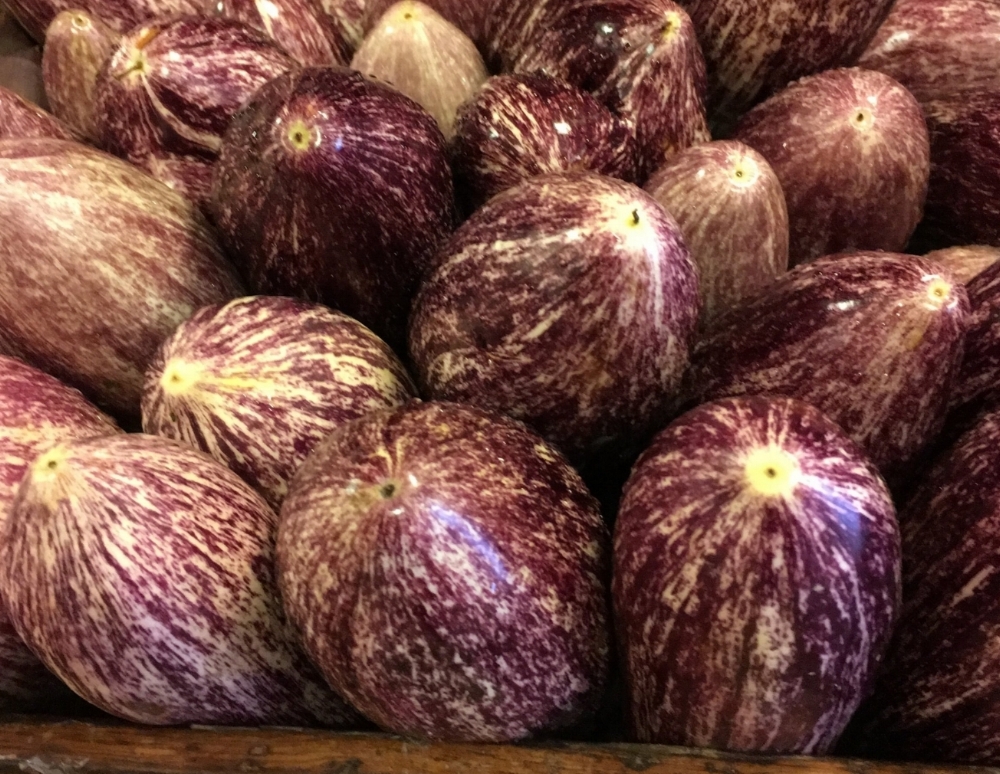A Child's Eye View of Lucca
Colorful balloons for sale in Piazza San Michele.
When I think of Lucca I picture medieval streets, renaissance walls, lovely gardens, music and fabulous food. Not so my 6-year-old friend Edie, who visited me in Lucca recently, along with her mom, Holly, and great aunt Pat. She gave me a whole new perspective - Lucca looks different when seen through a child's eyes.
At 6, Edie is already a good traveler. She likes the overnight flight, doesn't seem to suffer much from jet lag, and sleeps like a baby despite the time change - which made the adults in our group quite envious. She likes the outdoors and Lucca offers a lot of outdoor activities, making it a great destination when traveling with children. She enjoyed discovering succulents growing along the wall (she recognized these from home), smelling the roses in the gardens at Palazzo Pfanner, and was delighted to find that Italy has some interesting bugs (though not spiders - she didn't care for those).
Here are some fun activities for young kids visiting Lucca (all come with Edie's endorsement) :
Photo courtesy of H. Baker
Ride the carousel. This was definitely a highlight though it took some thought for my young friend to pick which animal she wanted to ride. In fact, she needed several attempts to try out the different options. Smart girl!
Edie and me, exploring plant life on the walls. Photo courtesy of H. Baker
Explore. Together we found "secret" spots all along the walls. Spots with huge rocks to climb, wild buttercups to smell, bugs to investigate, steps to climb, and statues to see. The wide grassy areas on the wall are great spots for running or playing games. Don't forget to look up - especially at the statue of the Archangel Michael atop the Basilica of San Michele, which Edie said was her favorite in all of Lucca. All this outdoor activity may explain why Edie slept so well!
Sottosopra (upside down)
Find the playgrounds and let the kids climb, swing, and tumble. There are several playgrounds on the wide areas of the wall in Lucca and some down in the town as well. Edie tried out most of them and gave them her kid-tested seal of approval.
Drink a milkshake. Or two or three. Italian milkshakes are quite different from American ones - less ice-creamy and more frothy, like a frappe. Flavored with vanilla, these were a real kid treat. Pretty good for grown-ups too.
Eat foccacia. This may have been Edie's favorite food in Lucca, and who can blame her? It's one of my favorites too.
The walls are the perfect bike path. Photo courtesy of P. Baker
Bike the walls. This is a great family activity, even if the adults do most of the work! There are all types of bikes for rent - everything from two- or four-person surreys to tandem bikes and single bikes in adult and child sizes. Rent by the hour, half-day, or full day. When Edie's legs get longer we'll let her do the pedaling and she can go as fast as she'd like!
Do some shopping. Children love having some of their own money to shop for gifts to take home to grandparents or friends. Putting thought into picking out just the right gift is a valuable life lesson too.
Some of Lucca's beautiful door knockers. Photos by E. Baker and H. Baker
Take photos. Give a kid a digital camera and set them loose to take their own pictures - it's a great vacation activity and helps create wonderful memories. Edie especially enjoyed taking pictures of flowers and all the beautiful door knockers in Lucca. I think her mom liked those door knockers too! Edie used her mom's camera, but I suspect her very own will make a good gift before her next trip.
Take a day trip to Pisa. This is especially fun for kids if they get to take the train from Lucca to Pisa, see the famous leaning tower, hear the music echo in the Baptistery, grab lunch in Pisa, and then take the train back to Lucca. This makes a perfect day trip and what child wouldn't like a photo of themselves next to the leaning tower as a reminder of their trip?
Edie and her mom, Holly, in a famous spot. Photo courtesy of P.Baker.
When traveling with a small child it's important to plan kid-size activities, shorten visits to places like museums and churches, and add in lots of breaks for active play time. It also helps to be based in a smaller, less chaotic city like Lucca. Having an apartment is a good strategy too - it gives everyone room to breathe, accommodates child bedtimes, allows for some meals at home rather than always eating out, and gives a child a space they can settle into. Having a flexible agenda is key, as is planning some time for the parents to get out on their own for some grown-up exploring. Then relax and enjoy the view through a child's eyes. -post by JB



































